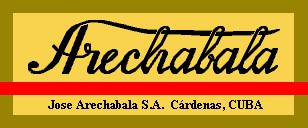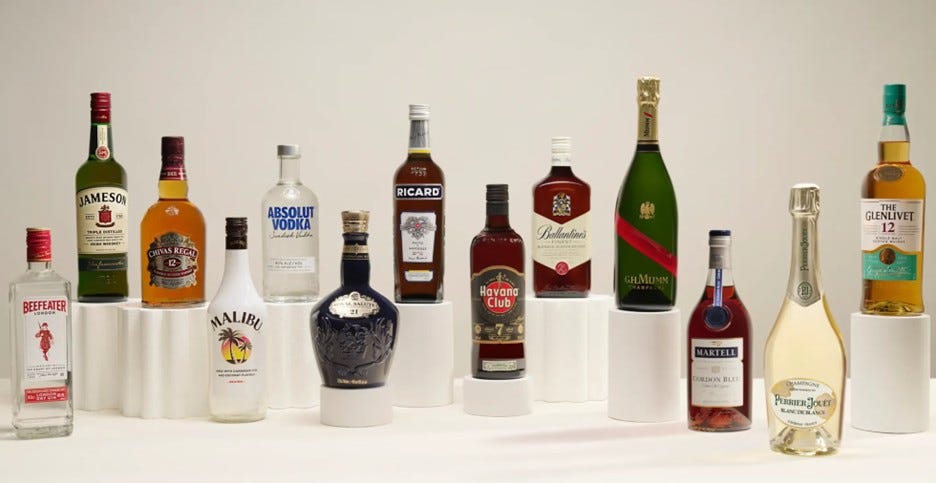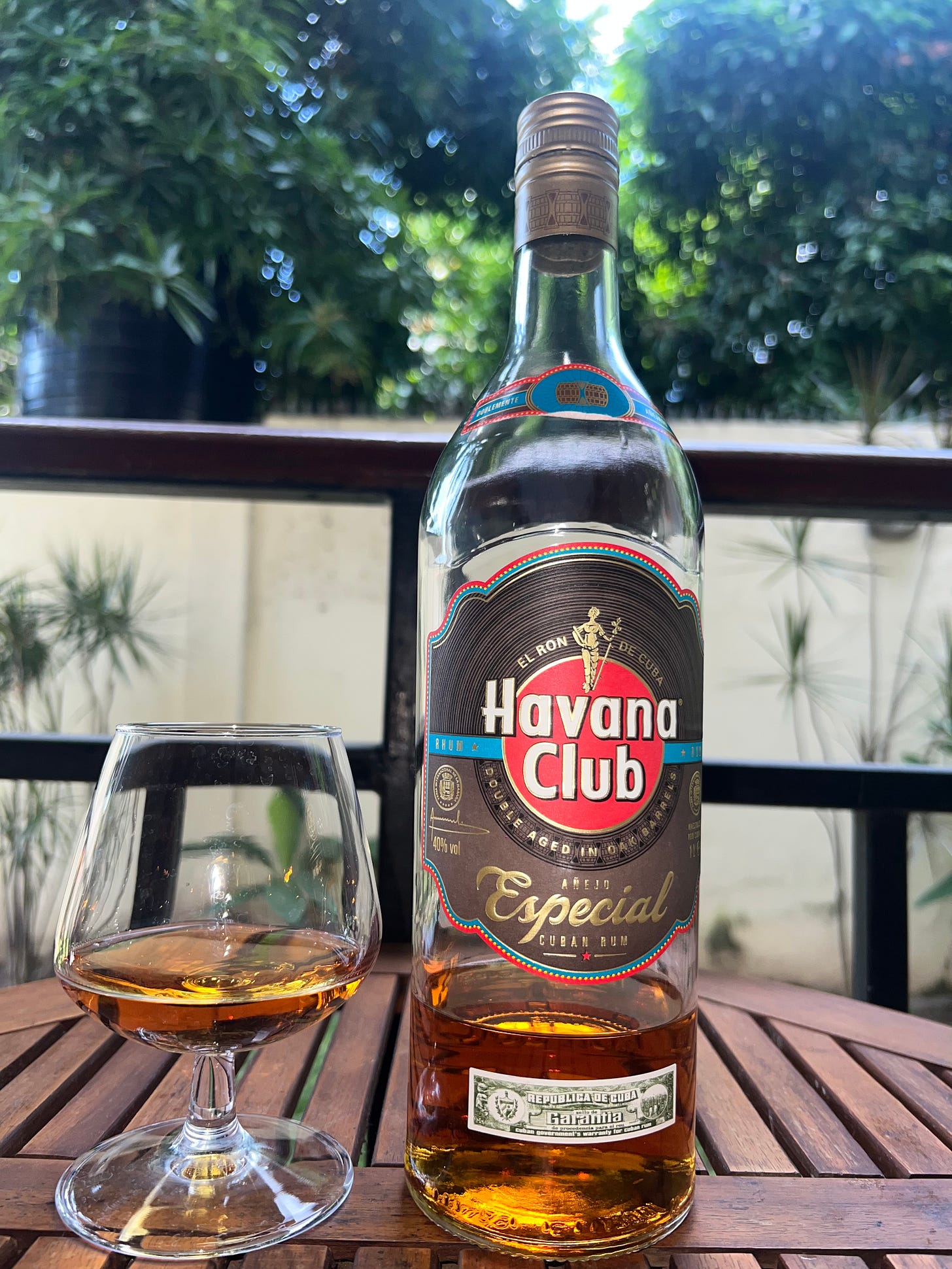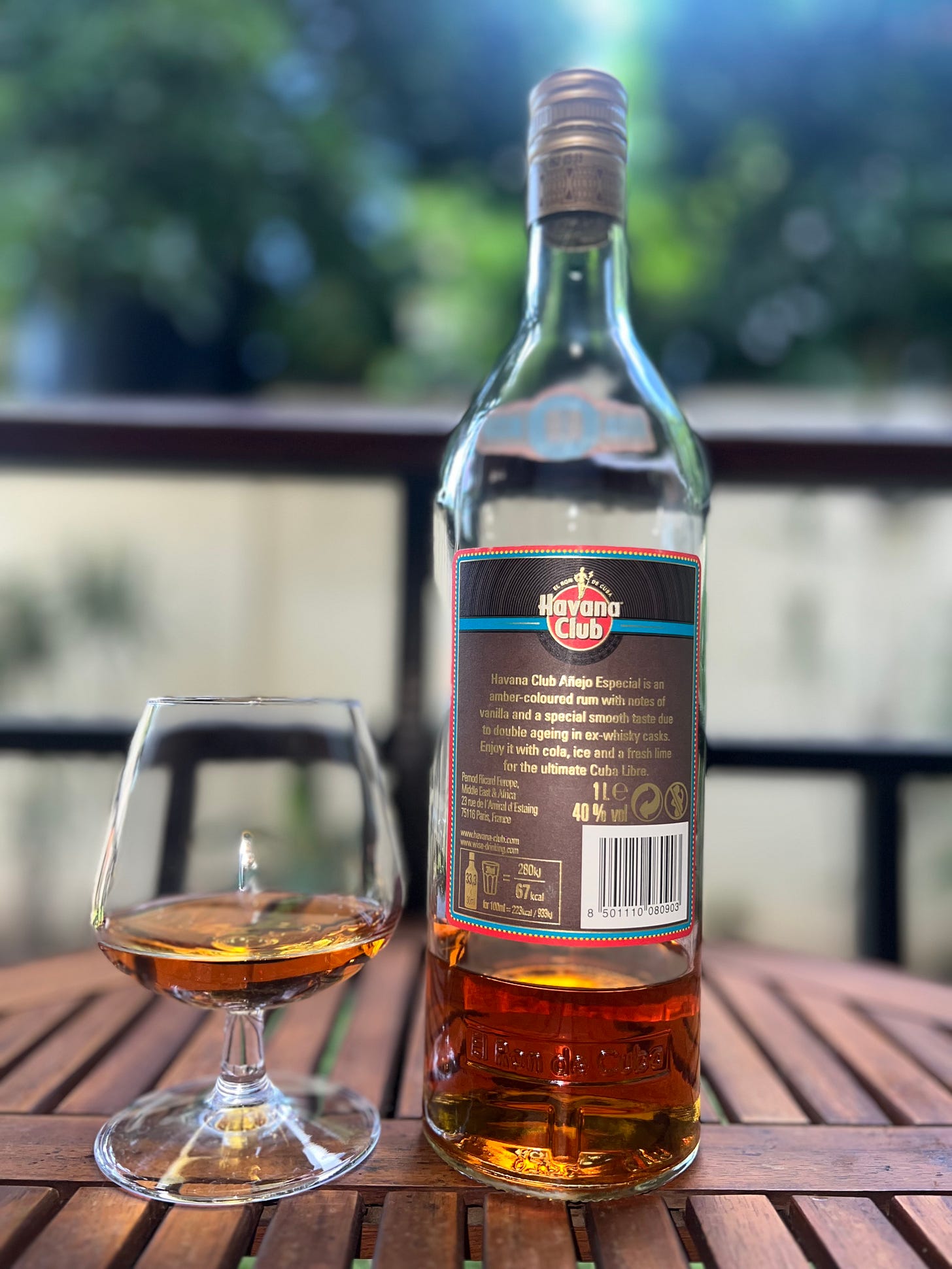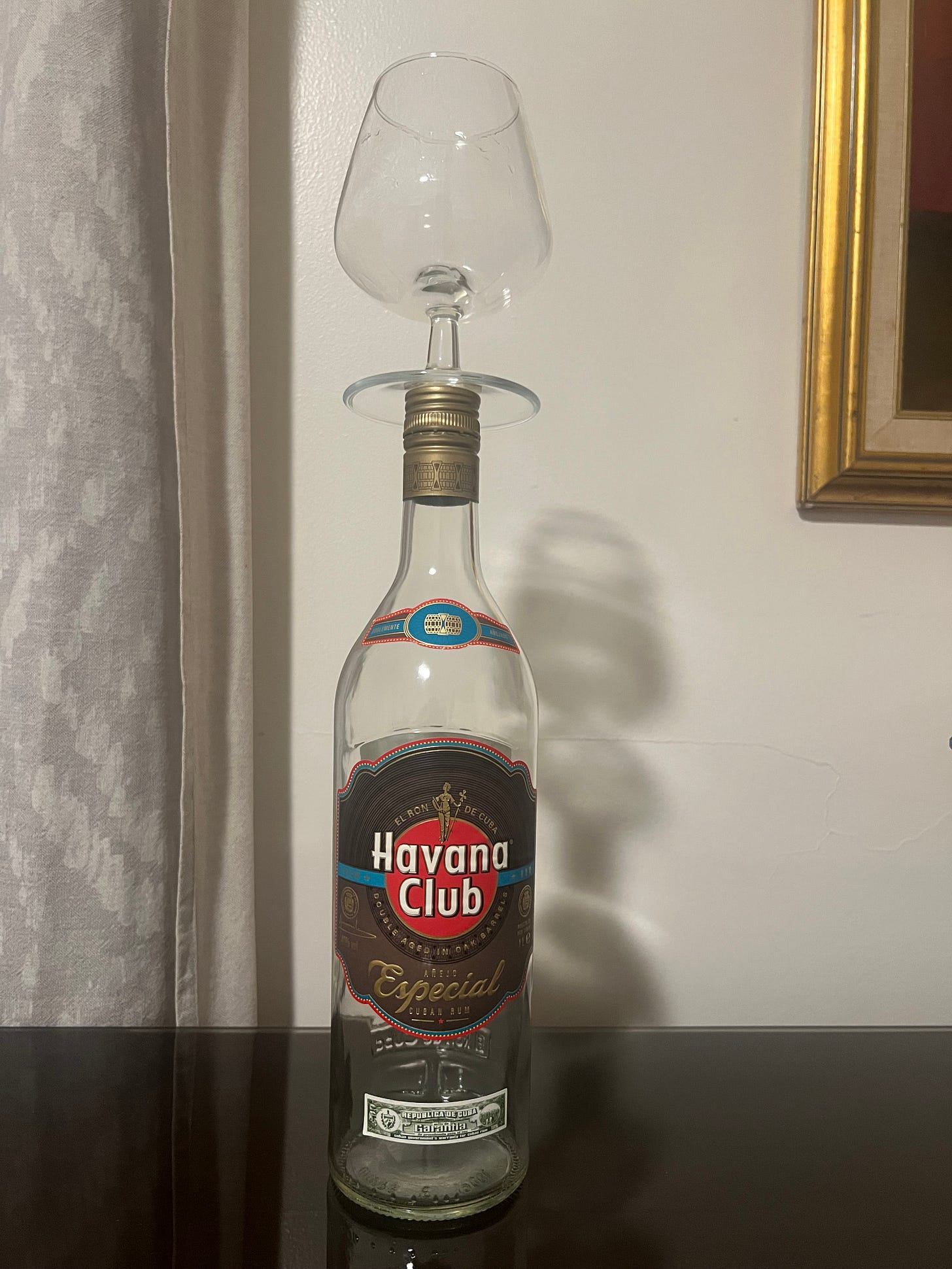The amber in the glass is *chefs kiss*
Sipping tips: When you pick this up, I implore you to chew your food before swallowing. Most spirits taste harsh if you down it immediately (taking shots or drinking it like its juice): you’re blasting your palette and taste buds with high-proof alcohol. Take a small swig, let the liquid sit in your mouth, and hug every crevice for 4-5 seconds (open the taste buds). Down it. You’ll pick up all the flavors and truly know what the beverage tastes like. Once you do that 1-2 times, your palette is ready. Drink away neatly.
And to my NY’ers, I am sorry for all the wild language.
Let’s do some human level-setting before we dive in.
Last week, I did a review on white wine Worthy Park’s unaged, Rum-Bar Silver (Jamaica). Speaking of, my first try of the Especial was right after I had a glass of the Rum Bar Silver. Don’t talk to me about mixing darks and lights if you drink Mai-Tais. It’s all alcohol. However, there is such a thing as ‘getting up there in age,’ so I had to sit down for a while and come back to finish writing this piece a few weeks later.
Any who, let’s venture on to Koo-ba! When I think Cuba, images of people doing normal things – eating, sleeping, hugging, lusting, loving, drinking (rum), etc. – come to mind, because that’s just what happens across the world vs. whatever images we may conjure up of what takes place in specific countries. The unexciting routine of daily life isn’t media-worthy material, so instead, we have manufactured associations that occupy the mind-shelves. When I think Cuba, I also associate it with being the closest island (in distance) to Jamaica. One you can look at from the top of Blue Mountain. It’s a sight to see. From the Caribbean side of my brain, I also associate Cuba with being massive: it is the largest island-nation in the region. To put this in context, you have island nations with a few thousand people compared to Cuba’s 11 million plus. Most Caribbean-nation inhabitants can’t fathom an island of that scale. When I think Cuba, I have vague recollections of classes I took at Boston University that delved deeply into colonial and 20th century Cuban history. I’ll get back to those books/learnings at some point.
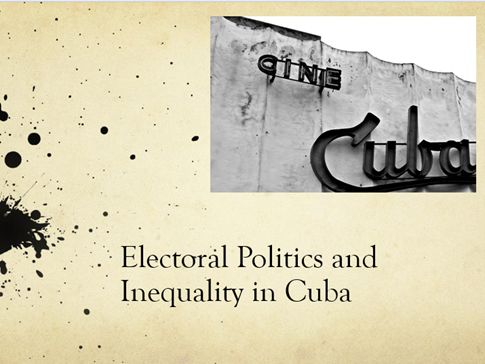
When others think about Cuba, an embargoed land and Guantanamo Bay come to mind, mainly for American citizens (I’m sure). The home of fine cigars and even one of the fiercest UFC fighters, Yoel Romero. Brother is built like no other human (hear Joe Rogan talk about it). For non-Americans who aren’t history nerds, I’m sure confusion abounds as to why we have beef with the Cubans. And for young(er) Americans, who also aren’t history geeks, you either rarely think of Cuba or have random wonders as to why things got the way they are. None of the above applies to people who live in Florida where the most substantial population of the Cuban diaspora lives (Little Havana).
While all of the above is heady, I offer a gentle reminder that the vast majority of Cubans are likely no different than you or I. Going about their lives in mundane ways, for most of their days anyhow. Some excitement always kicks off, life ruffles your feathers in that way.
Some disclaimers (why this rum, embargo, geopolitics, etc.).
First off, my fellow Americans, I’m sorry – you can’t buy this at home. This is not me ‘stylin’ on you’ (I am); I’m writing this from Jamaica and, like quite literally everywhere else in the world, you can get Cuban rums here, albeit a very minimal selection, and only from more ‘upscale’ establishments. The politics, connections, and business relationships governing the “why” is a separate article, but those nuances are important factors determining the placement of Cuban rums in certain retail establishments on the island. Note: This is all referring to Kingston, by the way. Second, these things cost mucho dinero. I can only review what I have on hand right now. Third, I’m reemphasizing that buying and drinking Cuban rum is not a particularly remarkable activity anywhere but the U.S. because of our Embargo on the island-nation (note: Havana Club is usually in the top five most consumed rums globally). I’ve done this a few times, because I’m gluttonous for disappointment, but phone up a friend/family in other parts of the world (if you can), tell them to search Cuban rum on the web/liquor store near them, and I’m certain they’ll say some version of “Yea, I can get this, this, and that.” You can’t even go to the Havana Club website, or any Cuban site (I think) for that matter, while in the U.S. I was only able to do so while in Jamaica since my laptop’s IP registered as Jamaican and allowed entry. Felt like I was exploring an entirely new universe. I saw things you would never see! *dramatic voice* Okay, now I am kind of stylin’ on you.
My fellow Americans, a vote for me is a vote for leading the charge on rum’s global exclusion from anything geopolitical and geoeconomic (that’s not practical but roll with me). A global passport where you get stamped up for touring the rum regions of the world. You can go to Cuba if you’re traveling on your rum passport, no religious and/or other state approvals needed. Your tour is only complete once you do your New England and Louisiana rum tours because #Merica. Rum is hereby excluded from all political jockeying. The truly global drink brings about world peace via (I’m not sure, we’ll figure that out) …
… okay, back to reality.
Some context on Cuba-U.S. relations without diving off into the deep end: pre-1962 Embargo, Americans freely went to Cuba. Matter fact, Koo-ba was the “spot” during Prohibition (Ernest Hemingway wrote some of his best work there, he lowkey didn’t want to come back to the U.S.). Jump back even further, Cubans were our very messy colonial-era molasses source when American colonists needed a plug post-the Haitians singing to the French – na na na na, na na na na, hey, hey, hey, orevwa. I promise I’m not dunking on the French again (I am). In other words, the Cubans, many of whom were French plantation owner escapees, provided the sugar and Molasses needed given disruption to the French-colonial supply coming out of Ayiti. You’re going to read the below quotes and (as an American) feel a little bamboozled as to ‘how things got the way they are.’ History is so exciting…and unfortunate…and every other positive-negative combination you can think of. But we must know it, it’s important.
The second jump in Cuban rum exports occurred during the Haitian Revolution. In the 1790s…disrupted the rum and molasses trade from the French Caribbean to North and South America. Many French colonials fled to Cuba bringing with them slaves and sugar-and rum-making equipment…Cuban rum exports peaked at the height of the conflict in 1802…St. Domingue was the largest exporter of molasses to the United States, and after the Haitian Revolution, Cuba emerged to fill the void.
By the end of the nineteenth century, Cuba exported rum to the United States…Sugar, however, was still the dominant industry in Cuba…By the 1860s, 60 percent of sugar consumed in the United States came from Cuba…In the last quarter of the nineteenth century, sugar, molasses, and tobacco represented 95 percent of the value of all Cuban exports to the United States, the largest market for Cuban goods.
…between 1920 and 1927, Cuba imported more than 3.5 million gallons of liquor…Yet, much of this imported alcohol as well as a great deal of the rum and aguardiente produced in the island, probably went down the throats of the millions of American tourists who traveled to Cuba during these years of prohibition.
Crazy, right?
Remember the word “aguardiente” (it’ll come up again)
All of the above quotes are from Frederick Smith’s Caribbean Rum. Review of this book next week!

This 1920s song must have been a hit because there are many renditions of it –
I don’t want to provide a disservice to the deep history weaving through a lot of those quotes, and I frankly haven’t read enough books to properly engage you on filling in the gaps. Side note – I’ll be reading Long Fight for Cuba later in the year, so we’ll close up some of the knowledge gaps. But if you want a taste of Cuba right before they spanked the Spanish independence (which the U.S. strategically aided in tipping in Cuba’s favor), the sort of amicable years following pre-Embargo, and then the abandonment of those friendly-ish relations, you should check out the Cuba Libre documentary on Netflix, it’s very, very, very, very informative. Nothing will ever be more informative than speaking to people who can relay their lived realities – my personal opinion – since published narratives favor the narrator’s aims. And with that in mind, I am going against the grain right now by not consulting Cuban friends on the writing of this article because I’m sure, at some point, I’ll taste more Cuban rums and then use them as an excuse to fill in the gaps at that point. One more recommendation: read Bacardi’s history (note: originally started in Cuba, but the family fled the country) and their website, The Real Havana Club. This is an ongoing saga because Bacardi also has a brand called Havana Club, which you can get in the U.S. They close the ‘Our Story’ portion of the site with –
Today there is one genuine Havana Club Rum rooted in honor, and another rooted in deceit. Though no longer made in Cuba, we still retain our tenacious Cuban spirit; our bottle will always display the crest of the Arechabala family, the true founders of Havana Club, and our liquid is based on the original rum recipe. Any other liquid claiming our name and recipe is an imposter. If there is no tree, then there are no roots. You can take a pen to history and cross things out, but the truth will always float to the surface. Forced from home. Aged in exile. Forever Cuban.
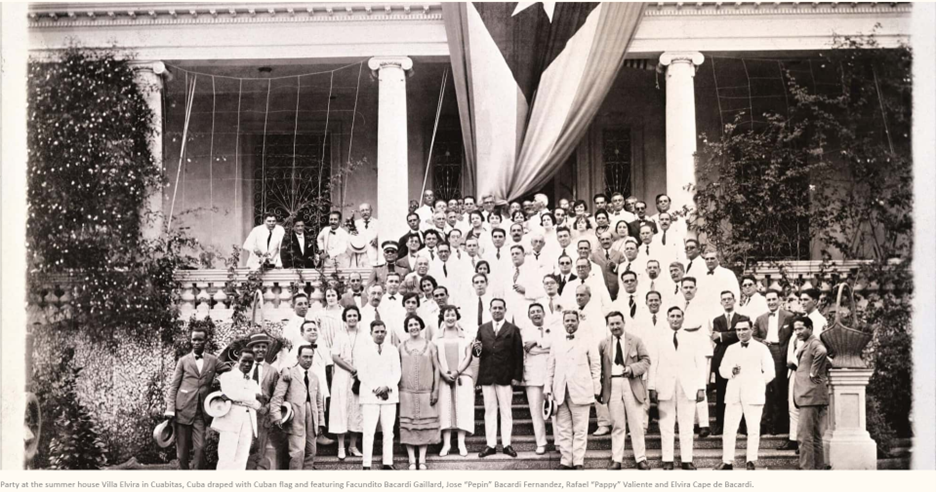
For the latest on the current saga, check out the below:
Part A – Nothing but the feels.
Apologies for taking a little while to get to the liquid. Historical context, (context) generally, I hope you feel is always worth the time. Well done on this liquid, Cubans, well done. This is approachable, easy and satisfying like a glass of red wine. I chose this rum because of its friendliness. You just wait. I’ll introduce you to some ‘challenging’ rum soon. There is nothing complex about Especial (not in a bad way) and it’s on the sweeter side (again, friendly), which may be (unclear) a sign of a little bit of that sucrose added. Not my jam, but I’m fine with it for people who need an intro to the spirit. Easier for most. Summary: standard, easy to introduce to people, will garner an “ohhhhhh, that’s not badddd” sort of reaction. Won’t entice you like the smell of an unaged rum. Most aged rums won’t, in my opinion.
Alright, let me explain the taste more concretely. A little honey, a lot of oak taste (a little much on the barrel love for me). The result is clean, buttery vanilla, easy on the tongue, with a slight oily mouthfeel (barrel, barrel, barrel). Character, but not too much, so still squarely in intro rum land. No disrespect, of course. Havana Club isn’t expecting you to sip this, they guide you – on the back of the bottle (Part B for details) – to put this in a cocktail.
With the above in mind, I’d advise to sip this with a group of friends who want to graduate to “real rum,” but wouldn’t know where to start. I say “real rum” because the production of Havana Club, and Cuban rums broadly, are done under the auspice of the Cuban rum maestros, or El maestro ronero, characters of distinction in Cuban society. If you’re going to make a cocktail with this, be adept at counteracting the heavy oaky “thing” going on.
Super worth it for the price. Seeing it for $18.50 to $23 or so (pre-shipping/taxes). Probably double that amount in Jamaica. Unfortunately, that’s how these things typically go in low-income countries that import products and have high duties (plus 100% on whatever you would typically pay for items). Will likely be around that listed price range above in Europe, if I had to guess. I want to take this time to apologize again to my fellow Americans. I’m here talking about pre-shipping prices when ordering this would send the FBI straight to your digital doorstep.
Look, I encourage you to try this rum if you can. Or at least keep an eye out for it when/if you get the chance to travel somewhere that will have the Especial. As a reminder, "somewhere" will be almost every country in the world except stateside...you'll figure this thing out. I’ll have to compare notes when I get my hands on Bacardi’s Havana Club. Next up, history and technical info.

Part A to Part B transition note: I split the rum review articles between why you may enjoy the spirit (what would inspire someone to try), A, and how it all came together, B, because I believe that A (for most) is the priority. But I know that many still want to understand B. I encourage you to continue
=)
PART B – Historical, technical.
← Historical →
Sources for the condensed historical touchpoints: Cocktail Wonk + Rumporter + Bacardi’s Havana Club + A German fella who is steeped in Havana Club rum-land (“My collection includes 720 different bottles.”) + Someone recommend some books so I can become an armchair expert
In less than a quarter of a century, Havana Club has become one of the three leading rum brands globally, just behind Bacardi and Captain Morgan, despite the American embargo that prevents it from entering the world’s largest rum market. But outside of Cuba, who really knew about the existence of this brand before Pernod Ricard partnered up with the corporation Cuba Ron in December 1993? – Rumporter
Cubans did. What?! Teasing, I know what the author is getting at.
—> José Arechabala y Aldama starts a company in Cárdenas, Cuba, purchases a sugar refining factory/distillery that he calls La Vizcaya, which is an homage to his hometown in Spain. The young town had a railway company and a port, which is important, I had to… (1878 – 1880)
As the proclaimed oldest and largest distillery in the country before the Cuban revolution, it produced both ron in a triple column still (distillation, rectification and dehydration) and aguardiente in a single column still… The buildings, renamed Ronera Cárdenas, now belong to Cuba Ron, who produce the Havana Club rums.
Brief intermission to remind you that the Cubans – and other formerly Spanish-controlled colonies – were likely producing rum for at least a century or more before the 1800s. Lower volumes and clandestinely. The Spanish did not want to interrupt the success of the metropolitan spirits (brandy, wine, etc.). I mention this throughout a few articles. It’s important historical context. One more thing, there’s probably a technicality with “oldest” distillery since I believe the Bacardi family got their start before Arechabala. Alright, back to it.
—> Arechabala’s company (JASA) produces ethanol (for fuel) as well and the enterprises continues to grow and prosper over the next several decades, surviving a devastating hurricane (1888) and the Cuban War of Independence (1895 – 1898), barely. “During the War of Independence… Cardenas was almost completely destroyed. International trade collapsed completely.”
—> Sugar refinery opened (1903)
—> “The Habana Club rum distillery is founded in Santa Cruz del Norte, independent of Arechabala SA.” (1919)
Probably obvious, but Habana is the native spelling. It seems it was switched to Havana to appeal to American consumers, which, as you know by this point, was not abnormal pre-mid-1900s.
—> The company likely benefited from the flood of Americans once Prohibition was enacted (1920)
—> The Arechabala business empire continued to expand (i.e., bought up local companies), and eventually renamed to José Arechabala S.A. (1921)
—> Havana Club was birthed, and rum was exported to the USA following the end of prohibition (1934)
—> “The world-famous Havana Club Bar opens on May 29th in the Plaza de la Catedral in Havana.” (1935)
—> Company continued to expand and even produced gasoline (ethanol) for Cuba. That gas comprised 63% of national consumption at one point (1943)
—> Competition heated up (domestic and abroad) in sugar and rum production, the company fell on hard times (turbulent 1950s)
—> Cuban Revolution: Fidel overthrows the military dictatorship of Batista; All companies are nationalized (assets seized, operations now under government control), with the company brand now run by Cubaexport (1959)
—> U.S. Embargo fully implemented (1962)
—> Last of the family, “Ramón remains in Cuba to oversee his distillery. One day he is jailed and given three choices: join the revolution, remain in prison, or leave Cuba altogether.” He flees; Same year, Cubaexport generates the new (and current) Havana Club logo (1966)
—> The Arechabala’s United States trademark for Havana Club expires and not renewed, giving Cubaexport free reign (1973)
—> “[Ramón] Arechabala goes bankrupt and tries to approach Bacardi, but nothing comes of this (according to his account in 2004).” (1974)
—> Havana Club brand relaunched in 70 countries, though, from the (70s – early 90s), the Soviet Union seems to have been the largest customer with upwards of 70% of rum going there
—> Soviet Union (key economic partner of Cuba) collapses; Pernod Ricard and Cubaexport/Corporación Cuba Ron establish a joint venture to have the French conglomerate distribute their products globally, while Cubaexport distributes Pernod Ricard’s products in Cuba. (early 90s – 1993)
Note: Seems like Ramón tried to broker a deal with Pernod Ricard when he got wind of the joint venture talks, but Pernod Ricard offered him a “ridiculously low” buyout proposal for (presumably) the trademarks, recipes, etc.
—> Ramón turns back to Bacardi again for a last-ditch effort, reportedly giving Bacardi the rights, ownership and trademark to produce Havana Club with the original recipe (1993 – 1995)
From 1996 onward, as I mentioned at the top of the article, they have been going back and forth in court on this, with the U.S. mostly siding with Bacardi up until recently. This saga is blockbuster-level developments. The likes of which we won’t ever really get the full reels of unless the Embargo goes away. We’d need cooperation to make such a dramatic film, and that’s not in sight anytime soon. If you’re wondering if I’m going to call out the French again Pernod Ricard, the company with beaucoup cash, is also being penalized via the Embargo…that’s not how big global business and geoeconomics work =)
Get rid of that green bottle in the top left and you’ll piss off the entire South Boston.
My being facetious aside, I hope you learned a lot. Let’s close out with how Havana Club goes from cane to everyone but the U.S.’s glass.
← Technical →
Disclaimer: A lot of this will make way more sense if you read Part C of my What is Rum article series.
Got a little heavy with the Saga, so let’s lighten things up a bit before we get into science.
When I see non-rum spirits attempt to make ‘fun videos’ and ‘people having fun’ ads, when that hasn’t historically been what they wanted their association to be, I chuckle a little. Not you, bro, it’s okay.
There’s a hint of mythology regarding Cuban rum – a certain cachet, a promise of elegance. Much as the mere mention of “Japanese whisky” gets the single-malt fanatic’s heart racing, the Cuban rums…hold a special meaning for rum connoisseurs… Despite the worldwide dominance of Cuban heritage rum, even enthusiasts are hard-pressed to tell you what makes a rum “Cuban style.” – Cocktail/Rum Wonk
Location, location, location:
—> Koo-ba!

Haven’t been to Cuba =/ but the sources I reference in this section have. Please reference those links for deeper dives into the land (mainly from a rum/distilleries’ perspective vs. beaches, mountains, cities, country-sides, etc.).
…quality is assured because Cuban rum has an advantage: regulation, regulation, regulation… One such law is that all Cuban rum must be made from Cuban molasses. This brings us neatly to production.
And with that last quote is where we’ll start…where it all starts, in fact – the cane.
Cuban Sugarcane: it’s not Cuban rum without it.
That might sound intuitive, but it isn’t. Many rum producers, even across island-nations, import their molasses to produce rum because their domestic cane industry can’t support their production volumes. Cuba’s size advantage affords them the luxury of cultivating their sugarcane at home and therefore supplying their distilleries with the raw materials necessary, presumably on a consistent enough basis. Their cane harvest season, or la Zafra, runs from December to April (typically).
In certain parts of Hawaii, they say the rum has hints of coffee notes because cane and coffee cultivation take place nearby (mutual soil love). I wonder if that’s ever the case with Tobacco and sugarcane in Cuba (soil-people, if that sounds ridiculous – let me know). As far as I can tell via Havana Club, don’t think that’s the case.
We’ll close with this: Havana Club utilizes molasses-only (from what I’ve gathered), which may be the case for Cuban producers at large (i.e., no cane juice). However, their rums, contrary to the Jamaican rum profile, are lighter: Ron Ligero.
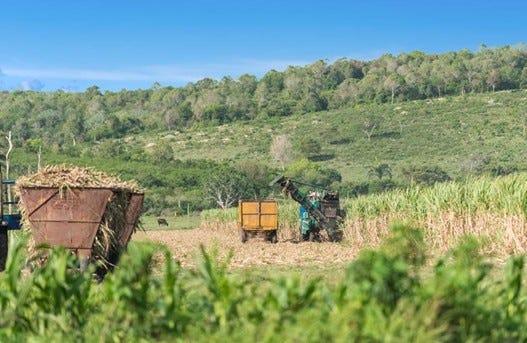
Fermentation and distillation: from molasses to rum.
Because you’ve read Part C (Technical) of the What Is Rum series, you’ll know what all of this means =)
Those molasses are placed in short-term holding tanks “that can hold 1,500” tons of the viscous, gooey goodness
The fermentation of the molasses is a 24-hour run vs. the up to 3 weeks I described last week for Worthy Park’s Rum-Bar Silver; Not a Cuban law/requirement, just a cultural practice, it seems
Column distillation – double columns for Havana – is a centerpiece of Cuban rum production. Repetitive reminder that the column still is a late(r)-bloomer technology (1800s onward), so the Cubans likely did what everyone else did prior to, which is produce pot still rums
First distillate off the column is aguardiente (fire water) @ 74 – 76% ABV
Second distillate off the column is “destilado de caña or redistillado” @ up to 95% ABV
Neither distillate is rum, per Cuban regulations
“To make the distillates into proper rum, the aguardiente is aged for several years and then filtered... After aging and filtration, it’s blended with the high proof distillate and possibly water to create an unaged “base” rum. Each unique combination of distillates (and perhaps water) make a different base, for different purposes. This blending of rums to create bases is another touchstone of the Cuban process.” – Cocktail/Rum Wonk

Does this mean that the Havana Club/Cubans don’t have any true, unaged rums, or do they sometimes produce and let go the aguardiente for that purpose?
This aguardiente out of Colombia is a completely different product (29% ABV), and definitely flavored. But if the aguardiente Cuba produces is anything like it…keep it, please…it’s awful. My guess is that the Cuban aguardiente is not like this, but I quite literally have no idea.

Aging after the (let’s call it Cuban) initial aging: unaged base blends to barrel (traditional) aging.
Alright, back to it…
I want to remind and point out the aguardiente is already aged (at least 1-year, by Cuban regulations, but seems like at least 2-years by Havana Club standards) and filtered by way of Charcoal filtration (won’t get into those details here, but TN Whiskey is famous for their juice going through filtration processes of the same name)
“After the initial aging cycle and filtration, all the rum bases progress through additional long aging in oak casks. Thus, all Cuban process rum is technically double aged. And some are triple aged!” (Cocktail/Rum Wonk)
My head hurts. Salute to Cuban traditions.
Havana Club is an artful master work of blending rums (post-base combinations) via barrel selection…this is where the maestro roneros GOAT-level technical capabilities come in handy
Must use white oak: European wood usually comes from France and the other can come from North America…lol…alright…
Does this mean Canada or does Pernod Ricard have the links and goes around the Embargo to snag bourbon barrels and hand it off? “Given the Pernod Ricard connection, we can guess that Chivas and Jameson previously filled a good majority.”
So, the longer the barrel was filled, the better (it seems) to the maestro ronero.
To understand the art of Cuban rum ageing, you have to appreciate the difference between extractive and oxidative ageing. The former is the spirit taking on the characteristics of the wood. Oak has a lot of vanillin, hence vanilla, so a virgin white American oak cask gives a bourbon a lot of flavours of vanilla. But oxidative ageing is about the process of flavour developing due to prolonged exposure to evaporation (or the Angel’s Share) and oxygen. A new barrel gives you a lot of extractive ageing. But an old barrel is better for oxidative ageing and it’s common for a Cuban rum to be rotated through a number of barrels, as blending rums from multiple barrels and re-barreling the blend keeps reintroducing oxygen.” – Master of Malt
Quick recap to avoid losing you.
Read: I’m trying not to lose my damn self
Molasses —> fermentation —> two distillates (aguardiente/low proof and destilado de caña/high proof) —> distillate aging (first layer of aging) and filtered —> first aged distillate now blended with aguardiente or other bases —> blends are put back into barrels for second aging, which creates a continuous/constant/dynamic aging of their rums —> charcoal filtration takes place, but it seems only for certain products (e.g., “white” 3-year product)
Man, that don’t make no damn sense to the Jamaican side of my unaged rum brain, but I can’t disrespect the tradition and heritage of Cuban rum makers. Again, salute.
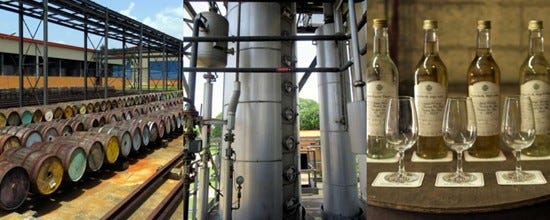
Back to the aging and blending confusion chat.
I can understand why the rum master at Havana Club is critical: overseeing the creation of so many base distillates, initial blends (“base rums”), and then the actual blending of the aged/combined distillates. Aging in stages…I can’t imagine how tough that is to manage
I’m still confused on if the filtration takes place at the initial aging (pre initial blending), or at second aging (i.e., to remove the color/supposed impurities from the 3-year to make it “white”). I won’t pretend to have mastery of that. When I figure this out, I’ll have an excuse to come back and correct myself…or get my hands on another Cuban rum and correct myself then

Whoa, that was a head-spinner. Let’s close this section with the Geographical Indication (Part C of the What is Rum series if you read those two words and are confused). Cuba’s is called the Denominación de Origen Protegida (or DOP), which lays out all the rules and regulations for something to be legally classified as Cuban Rum (many of those things I touched on in this section).
DOP mark/signifier is that nice little green label slapped on the bottom of the bottle.
Closer glance at the bottle for some final analysis.
Rum of Cuba à Double Aged In Oak Barrels (two barrels at the top to signify that, I suppose) à Is this triple or quadruple aged then??!! à I’m still a little confused
Añejo, that means aged…simplicity to prevent me from reeling
Maestro stamp and signature
40% ABV
Havana Club Añejo Especial is an amber-coloured rum with notes of vanilla and a special smooth taste due to double ageing in ex-whisky casks. Enjoy it with cola, ice and a fresh lime for the ultimate Cuba Libre.
“double ageing in ex-whisky casks” [no “e” in whisk(e)y] —> so not bourbon barrels, only French? —> Or is this a middle-finger to the U.S. by not acknowledging they got their hands on some former bourbon barrels? —> the confusion continues, I like it —> what we do know is that it’s likely French oak barrels
“Enjoy it with cola, ice and a fresh lime for the ultimate Cuba Libre.” NO, but you should. I won’t
“Pernod Ricard Europe, Middle East & Africa” Ock is not touching this, what do you mean Middle East? LOL —> Likely Pernod Ricard’s standard distributor label for certain regions
Based on what I’ve seen across the inter-webs, the Especial is a blended rum of up to five years old
So should you, my fellow American, go outside the country, buy a bottle of Especial, and bring it back into the U.S.?
If this was 2016, yes. At that time, the administration allowed unlimited importation of Cuban cigars and rum for personal use. But in 2020, the full strength of the embargo was reinstated on Cuban products, even for personal use. It’s been pretty much the same since then. You may be asking yourself – would an airport agent REALLY stop/penalize me for bringing a bottle in? Don’t they have more important things to worry about? Confiscation of “prohibited items” by the Office of Foreign Assets Control (OFAC) can result in fines and revocation of Global Entry status. You thinking I’m risking the big GE status for some rum? Yes No.
Look, I’m not sure how seriously this is enforced. The world works in mysterious ways: my observations, from swimming through different social pools, is that rules are easily obfuscated if the wallet is heavy enough, or the action in question would never bump high enough up the domestic security watchlist (more the former than the latter, to be clear).
The government guidance on this isn’t vague, at all. From the U.S. Customs and Border Protection site, it says:
Effective September 24, 2020, authorized travelers may no longer return to the United States with alcohol and/or tobacco products acquired in Cuba as accompanied baggage for personal use. Individuals authorized to travel to Cuba can consume alcohol and tobacco products for personal consumption during their stay in Cuba. Persons subject to United States jurisdiction may purchase or acquire goods of Cuban origin, including alcohol and tobacco products, while they are in a third country for personal consumption outside the United States.
Click through further and the Code of Federal Regulations (§ 515.585 Certain transactions in third countries, d) almost makes you believe that you can maybe just get the Especial in another country and bring it back, right? Nope.
Individuals who are persons subject to U.S. jurisdiction are authorized to import into the United States as accompanied baggage merchandise subject to the prohibitions in § 515.204, including Cuban-origin goods, that is purchased or acquired in a third country, provided that the merchandise is imported for personal use only. This paragraph does not apply to the importation into the United States of Cuban-origin alcohol or tobacco products.
I mean they really hammer the point home (§ 515.204 Importation of and dealings in certain merchandise).

Can’t even have a Cuban mango, that’s crazy. The NY boosters could probably pull off this rum heist. Putting it all on the line for some booze, though? People do it every weekend. I wouldn’t advise here. Not for Especial.
In the meantime, enjoy the view from afar –
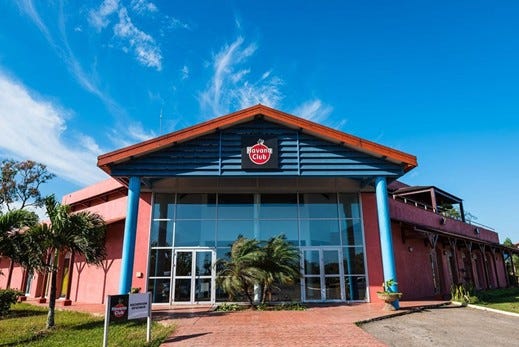
Till next time.
I hope you enjoyed this review. I’m sure you’ll enjoy Especial even more. Beyond the beverage, my goal is for you to walk away feeling an ounce more knowledgeable than you did however many minutes ago. If so, then mission accomplished. Cheers.
Done.
#rumresponsibly









